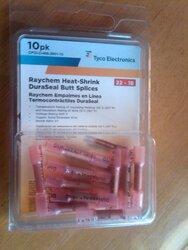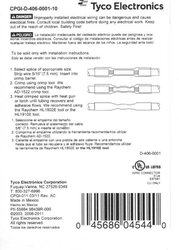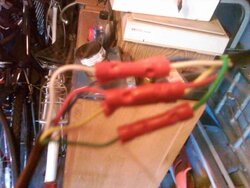Hello
I want to use them to connect # 18 gauge insulated solid conductor wires together in the house.
These are Crimp and Heat. $3.99 for a 10 pack
Are they any better than the old just crimp-on butt connectors?
See pics
Click to enlarge:
I want to use them to connect # 18 gauge insulated solid conductor wires together in the house.
These are Crimp and Heat. $3.99 for a 10 pack
Are they any better than the old just crimp-on butt connectors?
See pics
Click to enlarge:




